How Hamilton and Mercedes negated the impact of 10s penalty to win at Silverstone


Once Max Verstappen had crashed out of the race after his Lap 1 collision with Lewis Hamilton, with Charles Leclerc taking the lead, this race became all about whether Hamilton could make his pit stop late enough to minimise the number of places he’d lose when he took his 10s penalty there – but still have enough laps and tyre life left to catch and pass Leclerc.
Had this been a straightforward tyre graining or heat deg race, it would have likely played out very differently. But the tyre challenge here was always wear of the left-front. There was some blistering of the right-fronts – as seen most noticeably on the cars of Verstappen and Hamilton in the Sprint event on Saturday – but this wasn’t actually a dominant performance inhibitor.
The blistering was on the inside of the lesser-loaded right-hand tyre on the medium compound and was a consequence of the inner part of that tyre being dragged across the surface because of the camber of the wheels. The inside wheel does not straighten up under load as much as the more loaded outside and the greater camber means that the inner strip overheats from that dragging action.
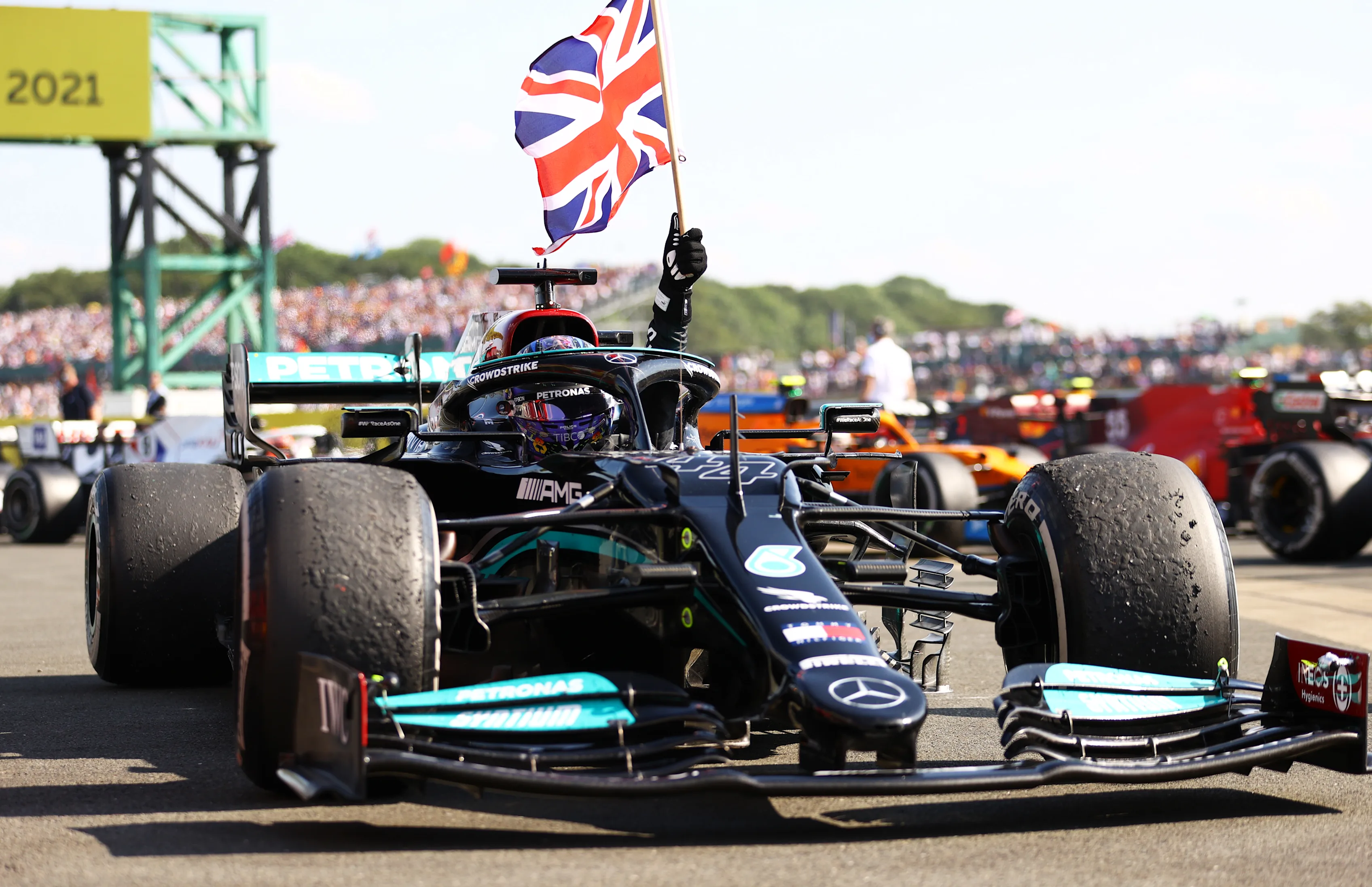
The medium compound was soft enough that this overheating strip would bubble and blister after a few laps of Silverstone’s high-speed, long-duration corners – but without any significant performance impact on the car. It looked way worse than it was, in other words.
The actual limiting factor of the tyres was wear of the left-front. That defined Hamilton’s challenge once he’d been informed of the 10s penalty for the Verstappen collision. With Leclerc leading the race, trying to overtake the Ferrari on track would have used up more tyre life and made the route to Hamilton’s victory impossible.
So with no undercut threat from behind as they pulled ever-further clear of Lando Norris’ McLaren, the strategy became one of maximising the length of the stint. The longer it went on, the further clear Hamilton would be of the pack and the fewer places he’d lose when he had to take that 10s penalty.
So Hamilton simply dropped back out of the Ferrari’s turbulent zone to minimise the stress on his tyres and then lapped at whatever pace Leclerc was setting – which thankfully for Hamilton was good enough to pull out time on everyone else.
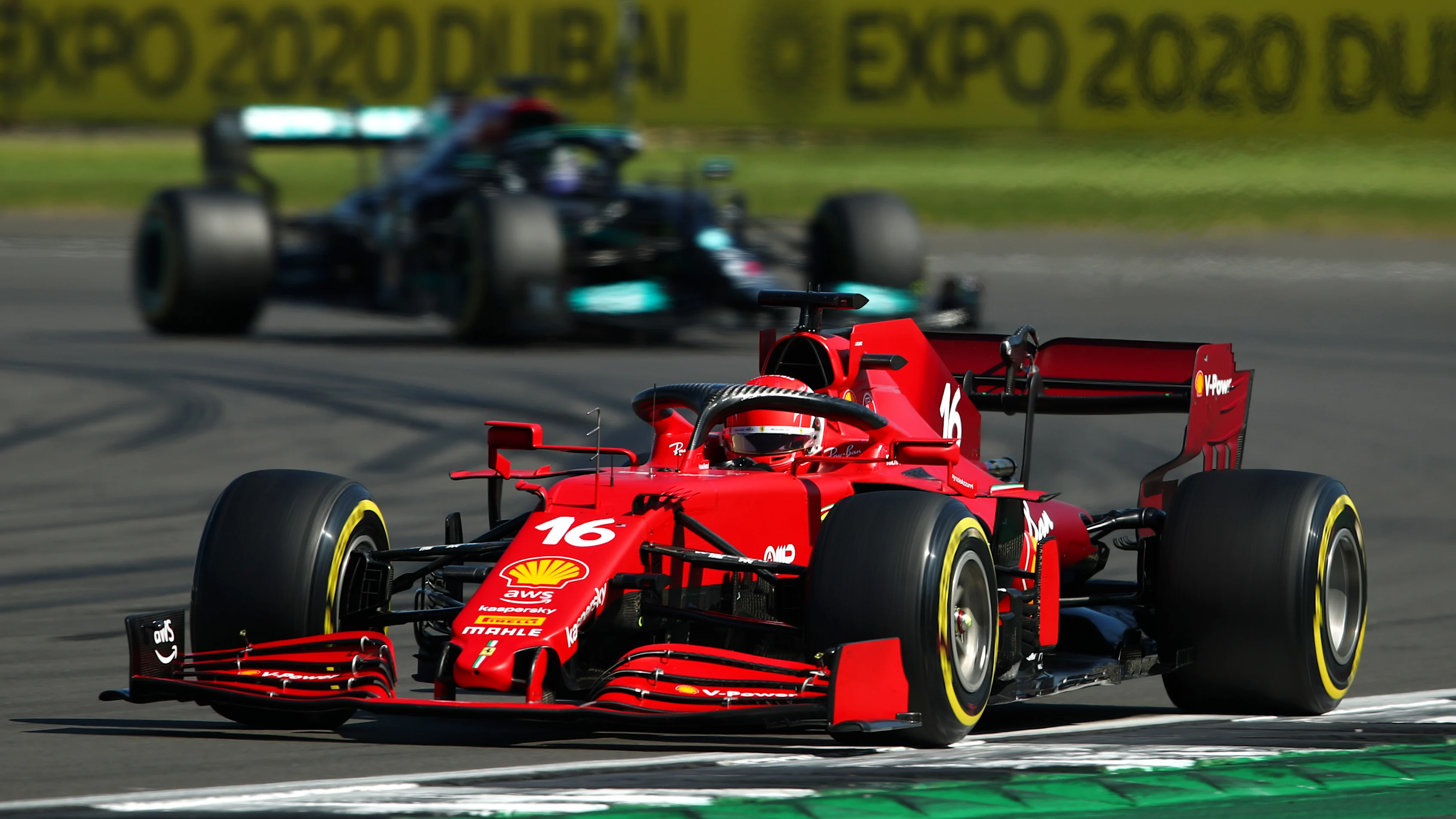
This was a great performance from Ferrari, with a car that had suffered terrible front tyre graining at the French Grand Prix. Graining is when the top of the tread shears off, preventing the tyre from properly gripping.
But that was not the challenge here, as Leclerc explained. “There’s been a big investigation after France to try to understand exactly why we were struggling that much with those front tyres,” he said. “I don’t think we got that answer yet. So yes, we are much better here but I don’t think it is because we found the complete answer of what happened in France.
"So, the investigation is still going on and we are still working hard on it. And even though we’ve had a good day today we don’t forget about the bad day in France and once we understand the full extent of why we were slow in France then I’m pretty sure we will do a big step as a team and it will help us to reproduce this type of performance as we did today.”
British GP Facts & Stats: Hamilton breaks yet another F1 record with his 99th career victory
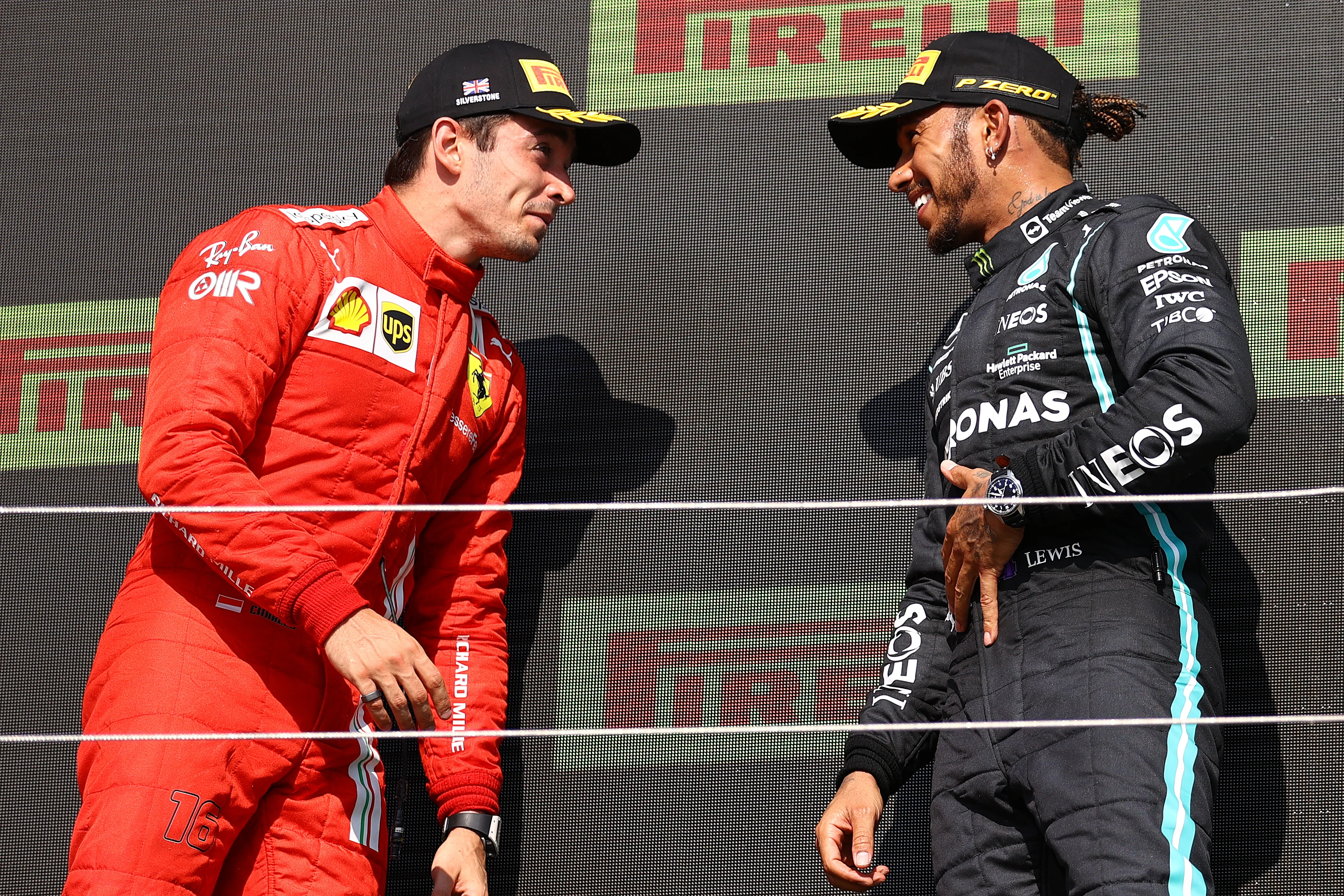
With Hamilton not making any undercut pressure on the Ferrari, Leclerc stayed out as long as possible. The longer he stayed out, the more performance he would be able to take from his second set of tyres because of the shorter stint. In fact it was Hamilton’s tyres which gave out first, as the world champion recalled:
“Charles just started opening up the gap and putting in some fantastic laps. I could see that he wasn’t really having to manage the tyre... I started struggling with our front tyres. I knocked out the left-front, it was completely empty, so I had to pit.”
That was on Lap 27 of the 52 lap race. The hard tyre onto which everyone switched would get to the end. Because Ferrari knew Hamilton would be taking the 10s penalty in the pits it didn’t need to worry about the undercut and didn’t therefore need to cover him. It kept Leclerc out for an extra two laps, making for the longest stint anyone did on the medium tyre.
WATCH: The moment Hamilton sealed British GP victory with late pass on Leclerc
After waiting 10s before his tyre changing could begin, Hamilton was down to fourth by the time he exited – with Leclerc, after his stop, leading comfortably from Valtteri Bottas and Norris (who had been delayed with a problem at his stop).
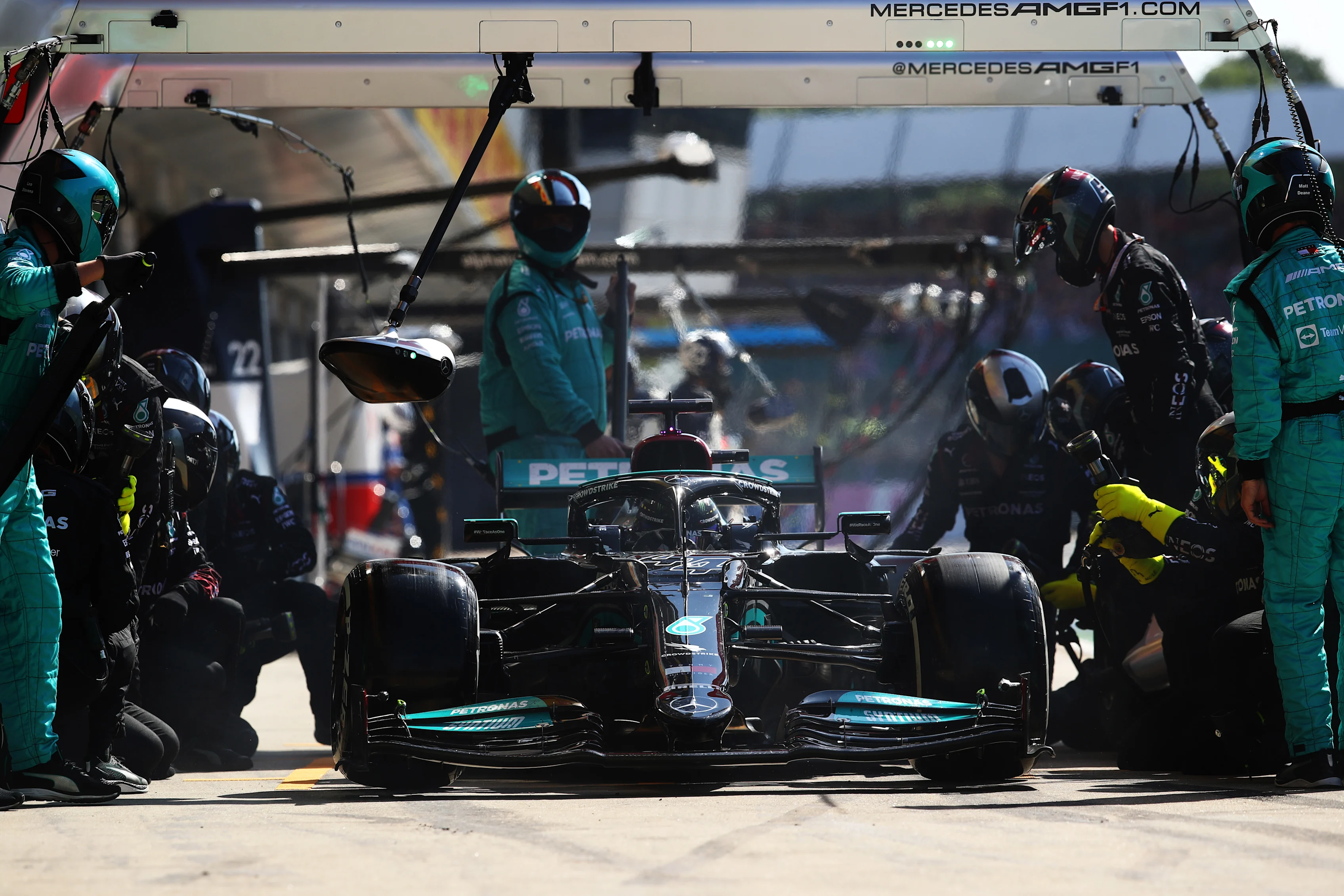
Three places and 13s behind Leclerc with almost 60% of the race gone, Hamilton was not optimistic of his chances. He picked off Norris and was allowed through under team order by Bottas. But that still left him trailing the Ferrari by 9s, with just 12 laps left. Hamilton began pushing flat-out and Leclerc did the same in response. Unlike in the first stint, here we saw a true performance comparison between the two cars and it revealed the Merc to be faster by almost 1s.
“I saw myself catching him but I was thinking ‘by the time I get to him my tyres would be finished at this pace’.” But 25 laps was not a long stint for the very tough C1 hard compound tyre here. So Hamilton was able to continue pushing and quickly ate up the deficit to the Ferrari. He passed for the lead with two laps to go.
Last year’s British Grand Prix saw Hamilton complete the last lap on three tyres as his front-left deflated and collapsed as it simply wore out its tread to the core. But that was a tyre that had done a 40-lap stint because an early Safety Car had forced a very early pit stop. There were no such concerns this time around, with the more evenly-matched stint lengths and Hamilton took that 99th career victory.
Next Up
Related Articles
 Re-watch Red Bull and Racing Bulls’ 2026 launch
Re-watch Red Bull and Racing Bulls’ 2026 launch Alpine part ways with Doohan ahead of 2026 season
Alpine part ways with Doohan ahead of 2026 season.webp) The 10 youngest drivers to race in F1 – and how they fared
The 10 youngest drivers to race in F1 – and how they fared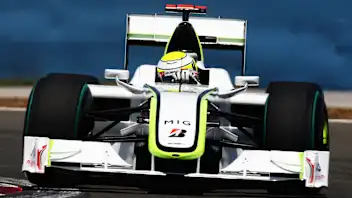 ExclusiveRoss Brawn reveals his favourite car designs
ExclusiveRoss Brawn reveals his favourite car designs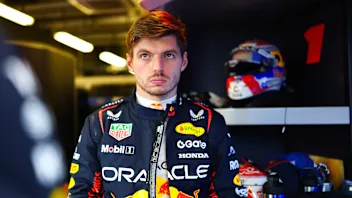 Verstappen names his most difficult season in F1
Verstappen names his most difficult season in F1/TEAM%20PREVIEWSHALF%20TERM%20REPORTS%20V1%20(13).webp) Team Previews 2026All you need to know about Racing Bulls
Team Previews 2026All you need to know about Racing Bulls